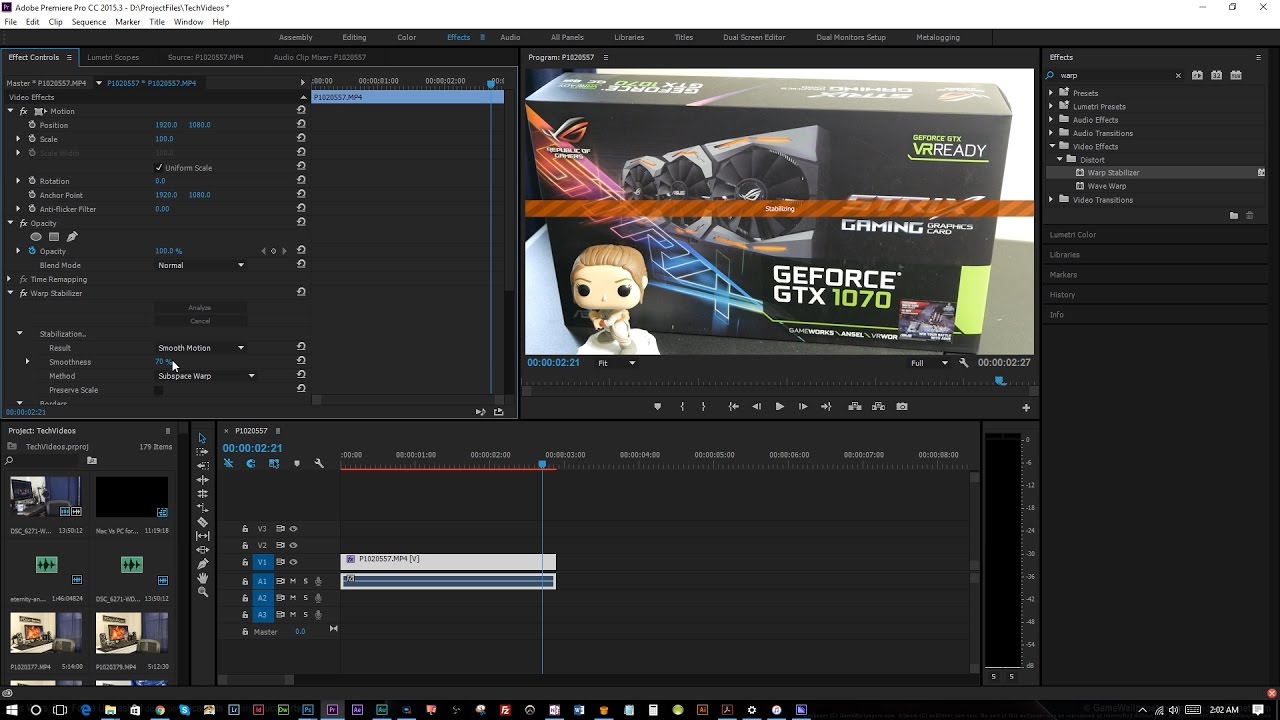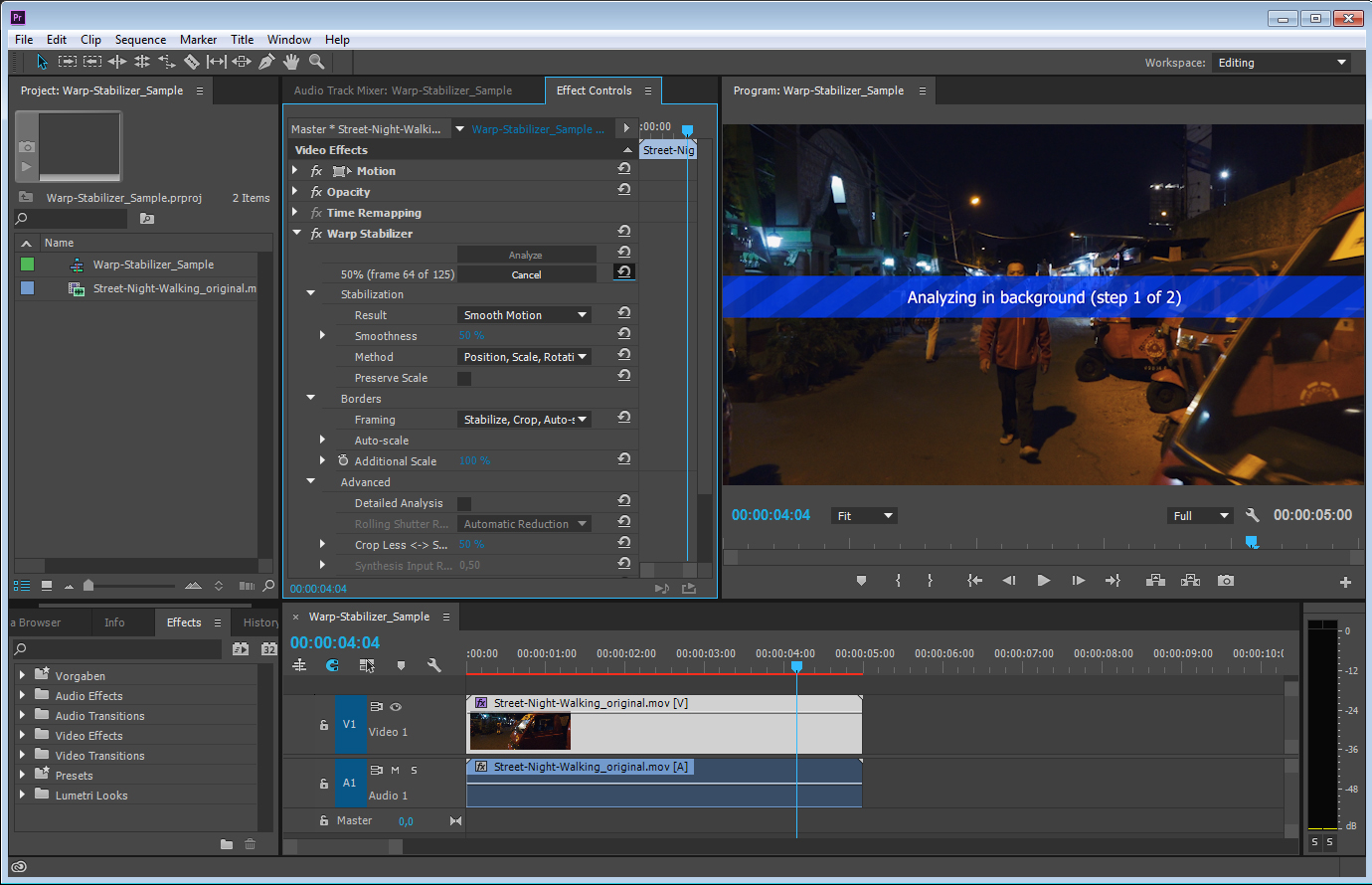

Warp stabilizer pro#
Warp stabilizer upgrade#
Upgrade Legacy titles to Source Graphics.Retiring the Legacy Titler in Premiere Pro | FAQ.Best Practices: Faster graphics workflows.
Warp stabilizer download#
Warp stabilizer install#
Install and use Motion Graphics templates.Add Responsive Design features to your graphics.Change the appearance of text and shapes.Overview of the Essential Graphics panel.Automatically reframe video for different social media channels.Overview of video effects and transitions.Set up and use Head Mounted Display for immersive video in Premiere Pro.Measure audio using the Loudness Radar effect.Advanced Audio - Submixes, downmixing, and routing.Monitor clip volume and pan using Audio Clip Mixer.Edit, repair, and improve audio using Essential Sound panel.Synchronizing audio and video with Merge Clips.Edit from sequences loaded into the Source Monitor.Find, select, and group clips in a sequence.

Importing XML project files from Final Cut Pro 7 and Final Cut Pro X.Importing AAF project files from Avid Media Composer.Setting up your system for HD, DV, or HDV capture.Use Premiere Pro in a dual-monitor setup.FAQ | Import and export in Premiere Pro.Best Practices: Create your own project templates.Open and edit Premiere Rush projects in Premiere Pro.Backward compatibility of Premiere Pro projects.GPU Accelerated Rendering & Hardware Encoding/Decoding.Hardware and operating system requirements.Kevin is the Music Director and Lead Composer at Filmpac. T goes without saying that you should always try to film as smoothly as possible in the first place, but you will be surprised at how many shots Warp Stabilizer can save. The same goes for clips with moving foreground, and clips that are, well, just too shaky. Particularly, slow-motion clips with flickering lights are tricky to stabilize. Of course, there will be some clips beyond saving. You can then adjust if things still aren’t quite right. I’ve had some good luck with the default “subspace warp” method, but usually opt for “position, scale, and rotation”, which always seems to be a bit cleaner.Īfter getting your settings customized, play your clip. At 50% reduction, a shot will often look too smooth, so I’ll usually dial the smoothness control back to around 3 to 10%. I always enable “detailed analysis” and “enhanced” rolling shutter reduction, but this is not usually necessary.Īfter analysis, the clip is then stabilized at the default settings. You’d add Warp Stabilizer as an effect, and it will immediately do a frame-by-frame analysis of the clip.

Let’s say you captured a clip that you can’t replace in the edit, but it’s a bit too shaky. Basically, this effect can take a shaky, unusable clip and smooth it out significantly (with some limitations, of course).Īnd it’s a fairly simple effect to use and master. This is my favorite feature of Adobe’s Premiere Pro. You can capture some pretty smooth shots with the right ergonomics, a steady hand, this secret post-production weapon: Sure, sometimes they’re necessary, but you would be amazed at what you can get away with with a simple handheld rig.

In my filmmaking career, I have very rarely ever used a gimbal of any kind.


 0 kommentar(er)
0 kommentar(er)
